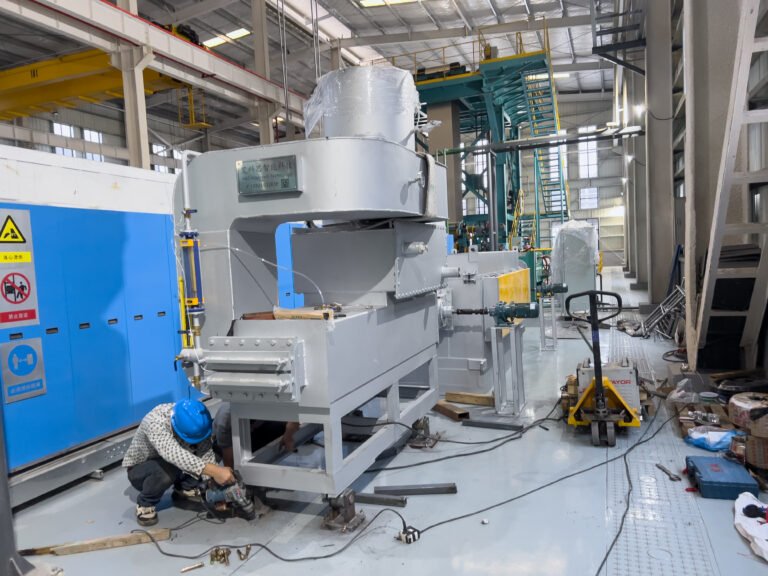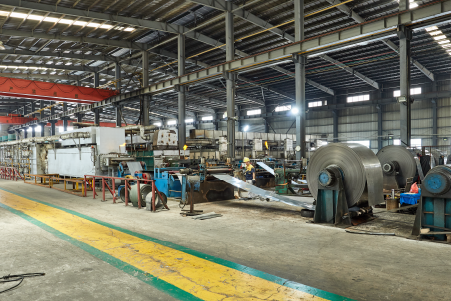
Struggling with inconsistent quality in your precision tubes after annealing? This often leads to unpredictable mechanical properties, causing failures in forming and application. The solution lies in achieving a perfectly uniform micro-structure1, which guarantees consistent performance and reliability for every part you produce.
A uniform micro-structure in precision tubes is achieved by maintaining precise control over temperature, atmosphere, and time during the annealing cycle. This ensures that the entire tube undergoes consistent grain recrystallization, resulting in homogenous mechanical properties like hardness, ductility, and tensile strength throughout the material.
Achieving this level of consistency can feel like a constant battle against hidden variables. Factors from furnace hot spots to atmospheric impurities can silently sabotage your results, leading to costly rejects and production delays. But what if you could master these variables? By diving deeper into the science of annealing2, you can transform your process from a source of frustration into a competitive advantage, delivering superior quality tubes every single time.
Throughout my career at AKS Furnace, I've seen countless companies grapple with the nuances of heat treatment. The quest for a uniform micro-structure is universal, whether you're making hydraulic lines, medical devices, or automotive components. It's a challenge that demands more than just a powerful furnace3; it requires a holistic understanding of thermodynamics, metallurgy, and process control. True mastery comes from dissecting each stage of the annealing process, identifying potential pitfalls, and implementing robust solutions. This isn't just about heating and cooling metal; it's about precisely engineering the material's internal structure at a microscopic level to meet the world's most demanding specifications.
What challenges arise in achieving uniform micro-structure in precision tubes?
Are you finding that your precision tubes exhibit unpredictable behavior during bending or flaring? This inconsistency is a classic sign of a non-uniform micro-structure, a challenge that undermines product quality and leads to significant material waste, directly impacting your production efficiency and bottom line.
The primary challenges in achieving a uniform micro-structure are maintaining absolute temperature consistency throughout the furnace, ensuring a stable and pure protective atmosphere, and controlling the heating and cooling rates precisely. These factors are especially critical for thin-walled or complex geometry tubes.
Overcoming these hurdles is fundamental to producing high-quality precision tubing. Many manufacturers focus solely on the peak temperature, overlooking the critical role of temperature uniformity across the entire length and cross-section of the product. Similarly, a reactive furnace atmosphere can alter the tube's surface chemistry, while improper cooling can introduce new stresses. For instance, a client of ours in the automotive sector was struggling with hairline cracks in their stainless steel exhaust components. They had a furnace that reached the target temperature, but they couldn't guarantee that every part of every tube experienced the exact same thermal journey. This variance, however small, was the root cause of their quality issues. Understanding and addressing these interconnected challenges is the first step toward achieving the flawless consistency that high-stakes applications demand. It requires a shift in perspective—from simply processing tubes to meticulously controlling the environment in which their fundamental properties are defined.
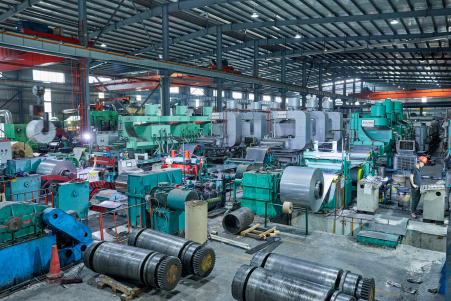
Achieving a uniform micro-structure is not a single action but the result of winning several interconnected battles against thermal and chemical variables. For manufacturers of precision tubes, especially those serving demanding sectors like automotive, aerospace, and medical devices, the margin for error is virtually nonexistent. In my experience, the challenges can be broken down into three critical areas: thermal management, atmospheric integrity, and the physical handling of the material itself. Each presents a unique set of obstacles that must be systematically overcome to ensure that every millimeter of a tube has the same metallurgical properties as the next. This pursuit of uniformity is where advanced furnace technology and process expertise truly shine, turning a standard manufacturing step into a source of significant competitive advantage.
The Intricacies of Thermal Uniformity
The most significant challenge is ensuring absolute temperature uniformity. A furnace's setpoint might read 1050°C, but in reality, "hot spots" and "cold spots" can exist, creating temperature deviations of 10-20°C or more. For a thin-walled stainless steel tube, this seemingly small variance is enough to cause significant differences in grain size along its length. The colder sections may not fully recrystallize, retaining internal stresses and higher hardness, while the hotter sections might experience excessive grain growth, reducing toughness. This disparity leads directly to inconsistent performance during downstream processes like hydroforming or bending, where uniform ductility is paramount.
I recall a case with a client manufacturing hydraulic tubing. Their rejection rate was unacceptably high due to unpredictable flaring results. A temperature uniformity survey (TUS) of their existing furnace revealed significant thermal gradients, especially near the furnace door and in corners. The tubes located in these colder zones failed to achieve the specified softness, while those in the core were perfectly annealed. This is a classic example of how a lack of thermal uniformity directly impacts product quality and profitability. Without precise, multi-zone heating control and calibrated sensor feedback, achieving a consistent micro-structure across an entire batch is nearly impossible.
Modern continuous bright annealing lines from AKS are designed to combat this very issue. We use multiple, independently controlled heating zones, often with advanced PID (Proportional-Integral-Derivative) controllers that constantly adjust power to maintain a stable and homogenous thermal profile. For example, our furnaces are engineered to meet stringent standards like AMS 2750F, which mandates temperature uniformity within a tight tolerance (e.g., ±5°C for Class 1 furnaces). This level of precision ensures that whether a tube is at the front, middle, or end of a production run, it undergoes the exact same thermal cycle, guaranteeing a uniform and predictable micro-structure.
Maintaining a Pristine Furnace Atmosphere
The second major challenge is maintaining the integrity of the protective atmosphere. During annealing, particularly for stainless steel, the surface must be protected from oxidation and decarburization. Any presence of oxygen or water vapor, even in trace amounts (parts per million), can cause a thin oxide layer to form, compromising the bright finish and, more critically, affecting the material's fatigue life and corrosion resistance. The goal is to create an environment so pure that the metal emerges from the furnace brighter than it went in. This requires a furnace with exceptional gas-tightness and a precisely controlled atmosphere, typically composed of high-purity hydrogen or a nitrogen-hydrogen mix.
A manufacturer of medical-grade stainless steel needles approached us because their products were failing corrosion tests despite being made from high-quality 316L steel. The culprit was their annealing process. Their furnace had minor leaks and an inefficient atmosphere circulation system, leading to intermittent oxidation at the microscopic level. This compromised the passive chromium oxide layer that gives stainless steel its signature corrosion resistance. The solution was not to change the material, but to perfect the annealing environment.
At AKS, our Bright Annealing Furnaces feature a fully welded muffle (a sealed inner chamber) made of heat-resistant alloys like 310S or Inconel. This design, combined with high-quality seals and a sophisticated gas management system, ensures an extremely low dew point (often below -60°C). This ultra-pure environment prevents any chemical reactions on the tube's surface, preserving its chemistry and ensuring a flawless, bright finish. For a product where surface integrity is paramount, controlling the furnace atmosphere is just as important as controlling the temperature.
The Impact of Mechanical Handling and Process Speed
Finally, the mechanical aspect of how tubes are transported through the furnace presents a subtle but critical challenge. The speed of the conveyor belt or rollers must be perfectly constant. Any fluctuation in speed means that different sections of the tube spend varying amounts of time in the heating and cooling zones, leading to non-uniform treatment. Furthermore, the way tubes are loaded onto the conveyor is crucial. If they are bunched together or overlap, they can create "thermal shadows," where some surfaces are shielded from direct heat radiation, preventing them from reaching the target temperature at the same rate as exposed surfaces.
This was a lesson learned by a producer of decorative stainless steel tubing. They noticed that some of their tubes had dull streaks and inconsistent hardness. The problem was traced back to their loading process. Operators were placing tubes too close together on the mesh belt to maximize throughput. This created contact points and shielded areas that were not properly annealed, resulting in both cosmetic and mechanical defects. The solution involved implementing a loading protocol that ensured even spacing between tubes, allowing for uniform exposure to the furnace's heat and atmosphere.
To mitigate this, our continuous annealing lines utilize high-precision variable frequency drive (VFD) motors for the conveyor system, ensuring exceptionally smooth and consistent travel speed. We also work with clients to design loading strategies and, in some cases, custom fixtures that guarantee optimal spacing and orientation of the product. This holistic approach, which considers the mechanical journey of the tube as much as its thermal and chemical environment, is essential for achieving the highest level of micro-structural uniformity and, ultimately, a perfect final product.
Temperature uniformity is critical for uniform micro-structureTrue
Even small temperature variations (10-20°C) can cause significant differences in grain size and material properties along the tube length.
Peak temperature alone determines annealing qualityFalse
While important, peak temperature is just one factor - uniformity, atmosphere purity, and cooling rates are equally critical for consistent results.
What are the root causes of non-uniform micro-structure during annealing?
Struggling to pinpoint why your annealed tubes have inconsistent hardness or poor formability? These issues are symptoms of a deeper problem. The root causes often lie in hidden process variations, turning your reliable manufacturing process into a game of chance and affecting your final product quality.
The primary root causes of non-uniform micro-structure are inconsistent furnace temperature, poor atmospheric control, and variable heating/cooling rates. These factors directly disrupt the uniform recrystallization of the metal's grain structure, leading to variations in mechanical properties within the same tube or batch.
Identifying these root causes is crucial for any manufacturer aiming for top-tier quality. It's not enough to know that a batch of tubes is defective; you must understand why. Was it a momentary drop in furnace temperature? A slight impurity in the protective gas? Or perhaps the cooling phase was too rapid? I once worked with a client producing precision copper tubing for HVAC systems. They experienced random failures during bending. After a thorough process audit, we discovered that the root cause was an unstable pressure regulator on their hydrogen supply line, which periodically altered the furnace atmosphere's composition. This small, overlooked detail was creating microscopic inconsistencies in the grain structure, leading to catastrophic failures downstream. This experience taught me that mastery of annealing lies in controlling the details that others ignore.
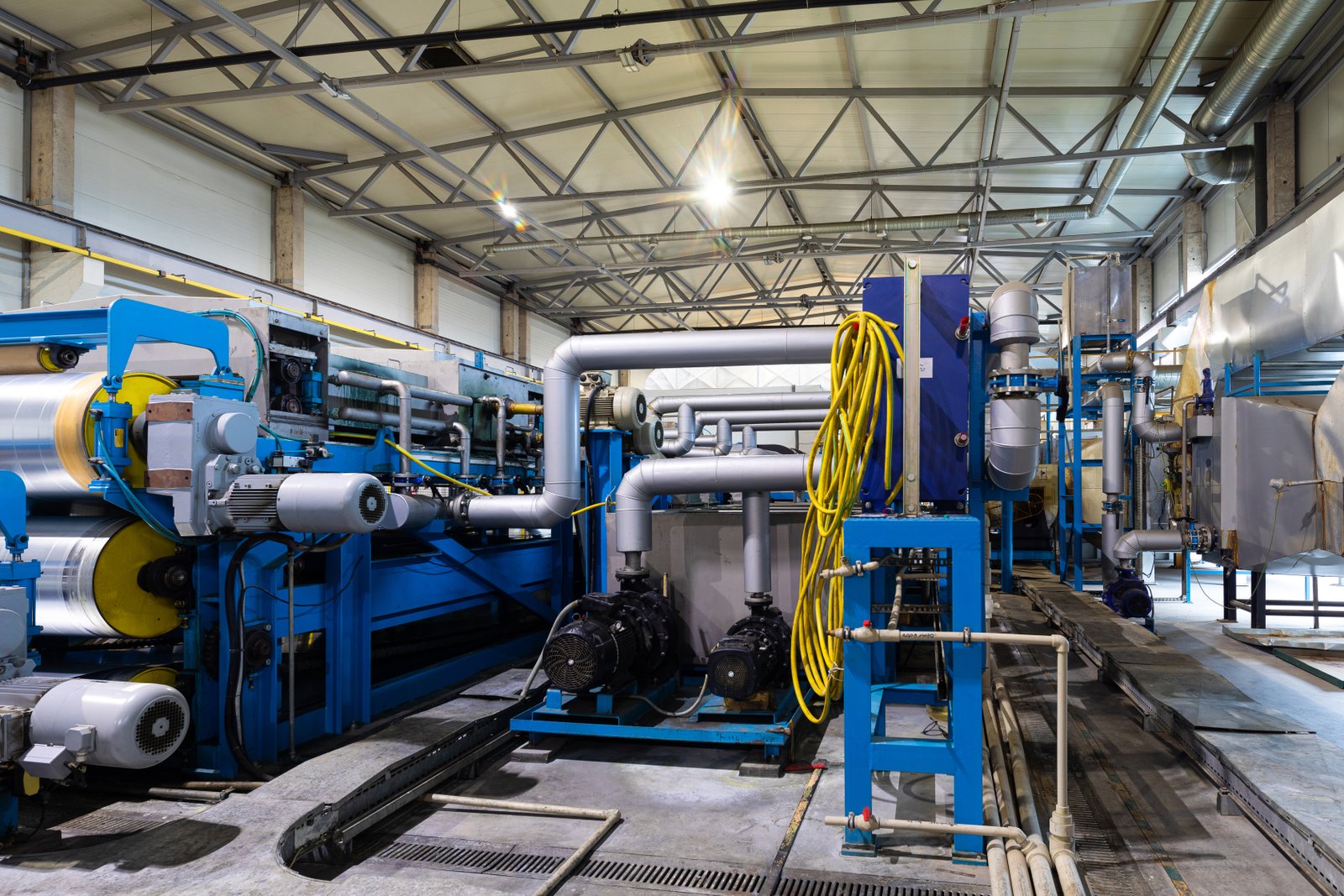
When a precision tube fails to meet specifications, it's rarely due to a single, obvious error. More often, the problem is a result of subtle, interconnected issues within the annealing process that culminate in a non-uniform micro-structure. As a furnace manufacturer, my role often extends into that of a process detective, helping clients trace these failures back to their source. The investigation almost always leads back to three fundamental pillars of heat treatment: the thermal cycle, the furnace atmosphere, and the material's physical state before and during the process. Understanding the root causes within each of these areas is the key to building a robust and repeatable annealing operation that consistently delivers high-quality products.
Flaws in the Thermal Cycle: Temperature, Time, and Rate
The most common culprit behind micro-structural inconsistency is a flawed thermal cycle. This goes beyond simply not reaching the correct peak temperature. The primary root cause is a lack of temperature uniformity, where different parts of the furnace, and thus different parts of the product load, are at slightly different temperatures. This can be caused by aging heating elements, poor furnace insulation, or an inefficient design that doesn't promote proper heat circulation. For example, in a large bogie hearth furnace4, the corners and areas near the door are notoriously difficult to heat evenly with the core of the load, which can lead to significant property variations within a single batch.
Another critical factor is the heating and cooling rate. If tubes are heated too quickly, thermal stresses can develop, and the core of the material may lag behind the surface temperature, leading to incomplete annealing. Even more critical is the cooling phase. For many alloys, a controlled cooling rate is essential to prevent the formation of undesirable phases or the introduction of residual stress. An uncontrolled or non-uniform cooling process—perhaps caused by inconsistent airflow in the cooling chamber—will invariably result in a non-uniform final micro-structure. A client producing alloy steel tubes learned this the hard way when their parts showed unexpected brittleness. The cause was traced to a partially blocked cooling jet, which was causing one side of the tubes to cool much faster than the other.
ly, the soaking time—the duration the material is held at the peak annealing temperature—is paramount. If the time is too short, recrystallization may be incomplete, leaving areas of the original cold-worked structure intact. If it's too long, it can lead to excessive grain growth, which reduces strength and toughness. In a continuous furnace, inconsistent conveyor speed is a direct cause of variable soaking times. Even a slight slip or hesitation in the drive system can mean the difference between a perfect anneal and a rejected product, highlighting the need for precision-engineered transport systems5.
Atmospheric Instability and Contamination
The furnace atmosphere is the second major source of problems. Its purpose is to protect the metal, but if not properly managed, it can become an active agent of damage. The root cause of many surface-related defects is atmospheric contamination. Leaks in the furnace casing, door seals, or gas supply lines can allow air (oxygen and water vapor) to infiltrate the chamber. This leads to oxidation, creating a discolored, scaled surface on standard steels and compromising the passive layer of stainless steels. The result is not just a cosmetic flaw but a functional defect that can drastically reduce corrosion resistance and fatigue life.
The composition and flow of the protective gas are also critical. For bright annealing of stainless steel, a mixture of hydrogen (H2) and nitrogen (N2) is common. An incorrect ratio can be detrimental; too little hydrogen may not be sufficient to scavenge all the residual oxygen, while an excessive amount can be a safety concern and cost-prohibitive. Furthermore, the gas must flow consistently throughout the furnace chamber to purge any contaminants and ensure every surface of the tube is protected. I have seen cases where poor furnace design created "dead zones" with stagnant atmosphere, leading to localized oxidation on the products that passed through those areas.
A very subtle but important factor is the purity of the gas supply itself. The source gas (whether from cylinders or a generator) must have a very low dew point, indicating minimal water vapor content. As mentioned in a previous client story, even a faulty pressure regulator or a contaminated supply line can introduce impurities that sabotage the entire process. This is why our AKS furnace systems often incorporate in-line gas purifiers and dew point sensors, providing a final layer of defense against atmospheric contamination and ensuring the environment inside the furnace is perfectly controlled.
Pre-existing Material Conditions and Handling
The third category of root causes relates to the state of the material before and during annealing. The initial condition of the tubes plays a significant role. If the tubes have inconsistent levels of cold work from the drawing or rolling process, they will respond differently to the same annealing cycle. A more heavily worked section will recrystallize at a slightly lower temperature or faster rate than a less worked section, leading to a varied grain structure.
Furthermore, the presence of surface contaminants on the tubes as they enter the furnace can be a major problem. Drawing lubricants, oils, or dirt must be thoroughly cleaned off beforehand. When heated, these residues can carbonize on the surface, leading to carburization (an increase in carbon content) or creating unsightly stains that are difficult to remove. In a bright annealing process, this can completely ruin the desired mirror-like finish and may even interfere with subsequent welding or coating processes.
ly, as discussed previously, the loading configuration is a critical but often underestimated factor. Improper spacing that leads to tubes touching or creating thermal shadows is a direct cause of non-uniform heating. It's a classic example of a simple operational oversight leading to a complex metallurgical problem. This is why process standardization and operator training are just as important as the quality of the furnace itself. A high-tech furnace cannot compensate for poor pre-treatment or improper loading procedures.
| Root Cause Category | Specific Cause | Impact on Micro-structure | AKS Furnace Solution |
|---|---|---|---|
| Thermal Cycle | Non-Uniform Temperature | Inconsistent grain size, incomplete annealing | Multi-zone PID control, AMS 2750F compliance |
| Improper Cooling Rate | Residual stress, formation of brittle phases | Controlled jet cooling/gas quenching systems | |
| Incorrect Soaking Time | Incomplete recrystallization or excessive grain growth | Precision VFD-controlled conveyor systems | |
| Atmosphere | Air Leaks / Contamination | Surface oxidation, decarburization | Welded gas-tight muffle, high-quality seals |
| Incorrect Gas Composition | Ineffective protection, compromised surface finish | Precise gas mixing stations and flow control | |
| Impure Gas Supply | Micro-oxidation, poor dew point | Integrated dew point monitoring and purifiers | |
| Material & Handling | Inconsistent Cold Work | Varied recrystallization response | Process consultation and standardization support |
| Surface Contaminants | Staining, carburization, poor finish | Recommendation for pre-cleaning systems | |
| Improper Loading | Thermal shadowing, contact point defects | Custom loading fixtures and operator training |
Temperature uniformity affects grain structureTrue
Non-uniform furnace temperatures directly cause inconsistent recrystallization, leading to variations in mechanical properties.
Faster cooling always improves annealingFalse
Uncontrolled rapid cooling can create residual stresses and brittle phases, damaging the material's properties.
How does non-uniform micro-structure impact the performance of precision tubes?
Are your finished components failing during quality control tests or, worse, in the field? This underperformance is often a direct result of a non-uniform micro-structure in the tubing. This inconsistency creates hidden weak points that can compromise the integrity of your entire product.
A non-uniform micro-structure directly impacts performance by causing unpredictable variations in mechanical properties such as hardness, tensile strength, and ductility. This leads to issues in formability, reduced fatigue life, inconsistent springback, and compromised corrosion resistance in precision tubes.
The consequences of this variability are far-reaching. Imagine a hydraulic line in a critical piece of construction equipment. One section of the tube might be perfectly ductile and absorb vibration as designed, while another, harder section just inches away could be brittle and prone to cracking under pressure. This is the tangible risk of a non-uniform micro-structure. At AKS, we design our furnaces to eliminate this risk. We had a client in the aerospace supply chain who was facing this exact problem. Their parts required extreme reliability, but inconsistent annealing was leading to unpredictable bending results. By implementing a continuous bright annealing furnace with validated temperature uniformity and atmospheric control, they were able to eliminate this variability, ensuring every single part met the stringent performance criteria demanded by their customers. This isn't just about meeting a spec; it's about guaranteeing safety and reliability.

The impact of a non-uniform micro-structure is not merely a theoretical concept for metallurgists; it has severe, tangible consequences on the real-world performance of precision tubes. When a tube lacks a homogenous grain structure, it essentially behaves like a composite of different materials, with properties that can vary significantly over very short distances. This inconsistency is the enemy of precision engineering. It undermines the design assumptions made by engineers and introduces a level of unpredictability that is unacceptable in high-performance applications. From my vantage point at AKS, I have seen how these microscopic flaws translate into macroscopic failures, affecting everything from manufacturability to the final product's long-term durability and safety.
Compromised Mechanical Integrity and Formability
The most immediate impact of a non-uniform micro-structure is on the tube's mechanical properties and its ability to be formed into a final product. Key properties like Hardness, Tensile Strength, and Elongation (Ductility)6 become unpredictable. For example, a tube might have a soft, ductile section with large grains right next to a hard, less ductile section with fine grains. When this tube is put into a CNC bending machine, the softer section will deform easily, while the harder section will resist the force. This can lead to an incorrect bend radius, excessive springback, or even catastrophic failure in the form of cracking or splitting at the harder zone.
This was precisely the issue for a customer of ours that manufactures high-pressure fuel rails for automotive engines. Their process involved complex, multi-axis bends. Inconsistent annealing meant that some tubes would crack at the bend's outer radius, where tensile stress is highest. An investigation revealed localized hard spots (with Rockwell hardness values 15-20% higher than the spec) caused by incomplete annealing in those areas. This not only resulted in scrapped parts, which is costly, but also risked tool damage. By ensuring a uniform micro-structure, where ductility is consistent along the entire tube, they could achieve repeatable, high-precision bends without failure, drastically improving their production yield and product reliability.
The economic impact is substantial. A study by the "International Journal of Advanced Manufacturing Technology" has shown that scrap rates in tube bending operations can be directly correlated with the variability of incoming material hardness. A batch of tubes with a standard deviation of hardness greater than a few points on the Rockwell scale will invariably lead to higher setup times, increased scrap, and lower overall equipment effectiveness (OEE). Uniformity isn't a luxury; it's a prerequisite for efficient, automated manufacturing.
Reduced Lifespan: Fatigue and Corrosion Resistance
Beyond initial manufacturing, a non-uniform micro-structure severely curtails the service life of a component by compromising its fatigue life and corrosion resistance7. Fatigue failure occurs when a material breaks under repeated cyclic loading, even at stress levels well below its ultimate tensile strength. The initiation point for a fatigue crack is almost always a stress concentration point, and a heterogeneous micro-structure is full of them. The boundary between a region of large grains and one of fine grains acts as an internal stress riser. Under vibration or cyclic pressure, a crack can initiate at this boundary and propagate through the material, leading to premature failure.
For instance, consider a stainless steel tube used in a heat exchanger. It's subjected to constant thermal cycling and vibration. If the tube has inconsistent grain structure, certain areas will be more susceptible to fatigue. A client in the chemical processing industry faced this issue, where tubes were failing in the field far earlier than predicted. The failures were traced back to weld decay and stress corrosion cracking that initiated in zones with sensitized micro-structures—a direct result of non-uniform cooling during the annealing process.
Similarly, corrosion resistance, particularly in stainless steels, is critically dependent on a uniform distribution of alloying elements and a stable passive surface layer. Inconsistent annealing can lead to sensitization, where chromium carbides precipitate at the grain boundaries, depleting the adjacent areas of the chromium needed for corrosion protection. This makes the grain boundaries highly susceptible to intergranular corrosion. A tube that looks perfect on the outside can be eaten away from within along these microscopic pathways, leading to leaks and failures that can have significant safety and environmental implications.
Inconsistent Performance in Specialized Applications
In many advanced applications, precision tubes are chosen for very specific physical properties beyond simple strength. For example, in medical devices like catheters or stents, flexibility and kink resistance8 are paramount. A non-uniform micro-structure leads to inconsistent flexibility along the length of the device, creating potential failure points. In applications involving heat transfer, thermal conductivity can be affected by grain size, and inconsistencies can lead to inefficient or unpredictable thermal performance.
Another critical area is magnetic properties. For tubes used in sensors or solenoids, a uniform, specific grain structure is often required to achieve the desired magnetic permeability or coercivity. I consulted for a company making solenoid valve sleeves where performance was erratic. The issue was traced to annealing; some batches had a larger grain structure that was too "soft" magnetically, while others were too "hard." This variability in micro-structure, caused by slight temperature fluctuations in their old batch furnace, was directly impacting the final product's electromagnetic performance.
Ultimately, a non-uniform micro-structure erodes the very essence of what makes a precision tube "precise." It introduces a level of randomness that is incompatible with modern engineering, where components are designed with tight tolerances and are expected to perform predictably and reliably for a specified lifespan. Achieving a uniform micro-structure through advanced process control is the only way to guarantee that the tube's performance in the real world matches the engineer's design intent.
Non-uniform micro-structure causes inconsistent mechanical propertiesTrue
Variations in grain structure lead to unpredictable hardness, tensile strength, and ductility along the tube length.
Uniform micro-structure improves fatigue lifeFalse
Actually, uniform micro-structure significantly enhances fatigue life by eliminating internal stress concentration points.
What solutions exist to minimize micro-structural irregularities in annealing?
Are you constantly battling the symptoms of poor annealing, like inconsistent hardness and failed parts? The solution isn't to tweak a flawed process, but to adopt a fundamentally better one. Advanced solutions exist that are specifically designed to eliminate the root causes of micro-structural irregularities.
Solutions to minimize micro-structural irregularities center on advanced furnace technology, including continuous bright annealing furnaces with multi-zone PID control for temperature uniformity, sealed muffles with precise atmosphere management to prevent contamination, and automated process control for consistent heating and cooling cycles.
The key is moving from approximation to precision. Instead of a furnace that gets "hot enough," you need a system that provides a perfectly stable and uniform thermal environment. I've seen the transformation firsthand. A client producing high-end kitchenware was plagued by cosmetic defects and inconsistent finishes on their stainless steel components. They invested in an AKS continuous mesh belt furnace. The combination of precise temperature zones, a hydrogen atmosphere with a low dew point, and a consistent belt speed eliminated the irregularities. Their rejection rate dropped by over 90%, and the brilliant, uniform finish became a key selling point for their brand. This demonstrates that the right technology is not a cost, but an investment in quality and efficiency.
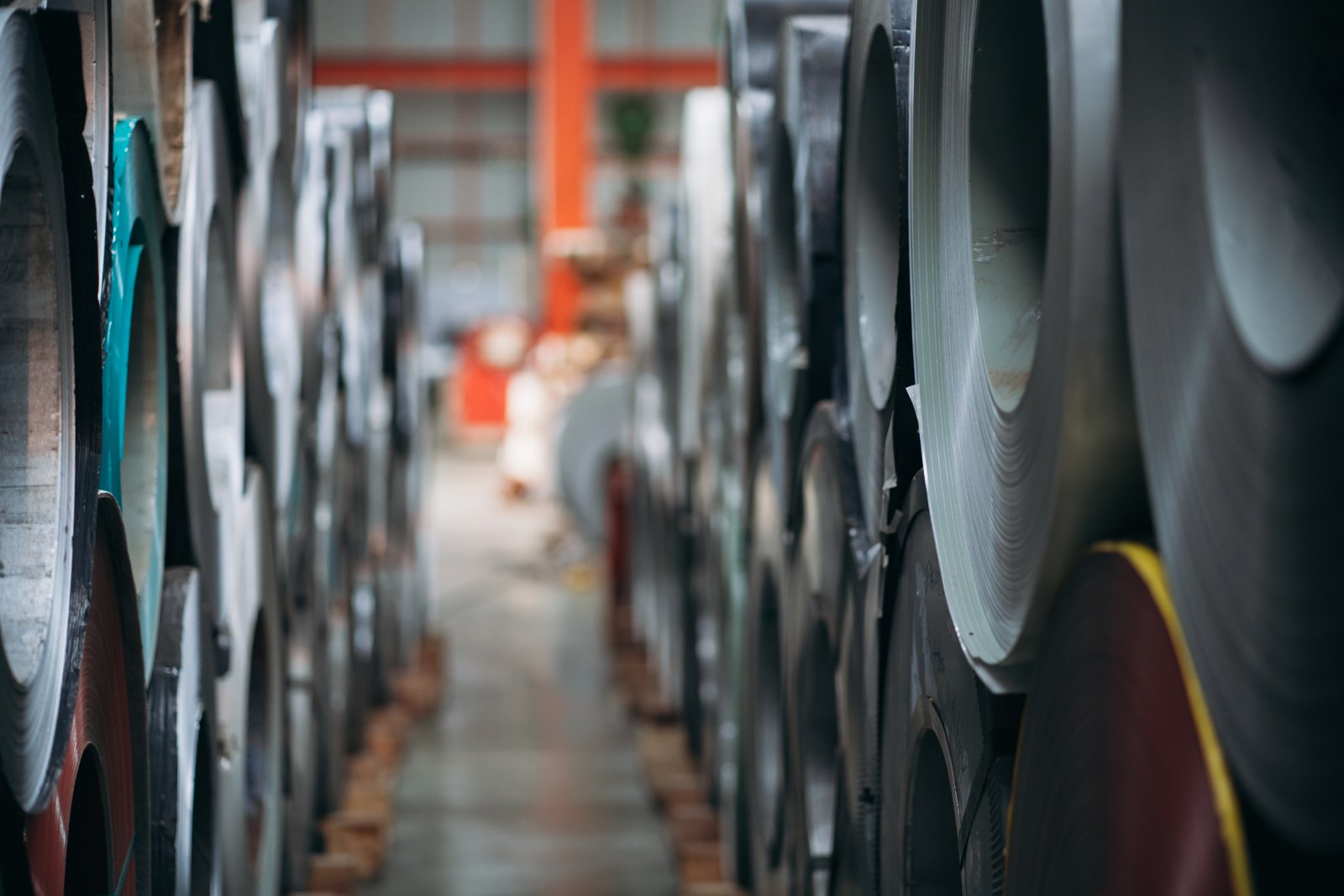
Minimizing micro-structural irregularities is the holy grail of annealing, and achieving it requires a multi-faceted approach that combines advanced equipment, intelligent process control, and rigorous quality assurance. It is no longer sufficient to rely on traditional furnaces and manual adjustments, especially when dealing with the tight tolerances of precision tubes. The solutions available today are engineered to tackle the root causes of non-uniformity head-on, providing a level of control and repeatability that was once unimaginable. At AKS, we focus on delivering these integrated solutions, understanding that the furnace is the heart of a much larger system dedicated to producing perfect metallurgical outcomes.
Advanced Furnace Design and Thermal Management
The cornerstone of any solution is a furnace designed for uniformity. Modern Continuous Bright Annealing Furnaces represent the pinnacle of this design philosophy for high-volume production of tubes. Unlike batch furnaces where load position can create temperature variance, a continuous furnace treats every part of the tube to the exact same thermal profile. This is achieved through a long, insulated tunnel divided into multiple independently controlled heating zones. Each zone has its own thermocouple and PID controller, allowing the system to create a precise temperature ramp-up, soak, and cool-down profile. This ensures that the product is heated evenly and held at a uniform temperature (e.g., within ±5°C or better) for the exact required duration.
To achieve this, we use high-quality, long-life heating elements strategically placed 360 degrees around the muffle to provide radiant heat from all directions, eliminating shadows. The muffle itself, typically made from a high-temperature alloy like Inconel or 310S stainless steel, acts as a sealed inner chamber. This design not only contains the protective atmosphere but also helps to buffer and homogenize the heat, further contributing to thermal stability. The insulation package is also critical, using advanced, multi-layer ceramic fiber materials to minimize heat loss and prevent external ambient conditions from affecting the internal temperature.
For applications requiring the absolute highest purity and precision, a Vacuum Annealing Furnace is another powerful solution. By removing the atmosphere entirely, it eliminates any possibility of oxidation or contamination. Heating is typically done through resistive elements surrounding the workload in a vacuum chamber capable of reaching pressures of $10^{-3}$ to $10^{-6}$ Torr. While the throughput is lower than a continuous furnace, the level of control over the heating and cooling cycle is unparalleled, making it ideal for reactive metals like titanium or for medical and aerospace components where no surface contamination is permissible.
Precision Atmospheric and Process Automation
Controlling the thermal environment is only half the battle; the chemical environment is equally important. The solution here is a closed-loop Atmosphere Control System. This starts with a gas-tight furnace muffle and high-integrity seals. The protective gas, typically a nitrogen-hydrogen blend or pure hydrogen, is fed into the furnace from a gas mixing station that uses mass flow controllers to maintain the desired composition with high precision. An in-line dew point sensor at the gas inlet and outlet continuously monitors for any moisture contamination, providing real-time feedback. If the dew point rises above a set threshold (e.g., -50°C), an alarm can be triggered, preventing the production of substandard material.
Furthermore, process automation is key to eliminating human error and ensuring repeatability. Modern furnace systems are managed by a PLC (Programmable Logic Controller) and HMI (Human-Machine Interface). From the HMI, operators can load specific, pre-programmed recipes for different products. The recipe dictates every parameter: heating zone setpoints, conveyor speed, gas flow rates, and cooling profiles. The system then executes this recipe perfectly every time. This removes the variability that comes from manual adjustments and ensures that every tube, whether processed on a Monday morning or a Friday afternoon, receives the exact same treatment.
This level of automation also includes data logging. All critical process parameters are recorded and stored, creating a complete digital "birth certificate" for each production run. This data is invaluable for quality assurance, process optimization, and troubleshooting. If a problem ever does arise, you can go back and analyze the data to pinpoint the exact cause, rather than relying on guesswork.
Quality Assurance through Monitoring and Validation
The final piece of the solution is a robust quality assurance framework built around the annealing process. This isn't just about inspecting the final product; it's about validating and continuously monitoring the process itself. The most critical practice is the Temperature Uniformity Survey (TUS), as defined by standards like AMS 2750F. A TUS involves placing multiple calibrated thermocouples throughout the furnace's working volume to map its thermal performance and certify that it operates within the required tolerance. This should be performed regularly to catch any degradation in heating elements or insulation over time.
Another key practice is implementing a System Accuracy Test (SAT), where the furnace's control thermocouples are checked against a calibrated test instrument to ensure they are reading correctly. Combined with the TUS, this provides confidence that the temperature displayed on the control panel is the actual temperature being experienced by the product.
The table below compares two primary furnace solutions for annealing precision tubes, highlighting how their features directly address the challenges of achieving a uniform micro-structure.
| Feature | Continuous Bright Annealing Furnace | Vacuum Annealing Furnace | Impact on Uniformity |
|---|---|---|---|
| Heating Method | Radiant heat in multiple zones | Radiant heat in a vacuum chamber | Multi-zone control provides a precise thermal profile along the length of travel. |
| Temperature Uniformity | Excellent (typically ±5°C) | Exceptional (typically ±3°C to ±5°C) | Minimizes hot/cold spots, ensuring consistent grain recrystallization. |
| Atmosphere Control | High-purity H2/N2 in a sealed muffle | High vacuum (removes all atmosphere) | Prevents oxidation and surface contamination completely. |
| Process Control | Fully automated via PLC/HMI recipes | Fully automated via PLC/HMI recipes | Ensures perfect repeatability and eliminates operator-induced variability. |
| Throughput | High | Low to Medium (Batch process) | Continuous process is ideal for large-scale, consistent production. |
| Best Application | SS, Carbon Steel, Copper tubes | Reactive metals, high-purity medical/aerospace parts | Solution is chosen based on material, volume, and purity requirements. |
By combining an advanced furnace design, precise automation, and rigorous quality validation, manufacturers can systematically eliminate the variables that cause micro-structural irregularities. This transforms annealing from an art into a science, delivering predictable, high-quality results every time.
Continuous furnaces ensure uniform heatingTrue
Continuous bright annealing furnaces use multiple independently controlled heating zones to maintain precise temperature uniformity along the entire length of the tube.
Manual adjustments improve annealing qualityFalse
Modern annealing solutions rely on automated PLC/HMI systems to eliminate human error and ensure perfect repeatability of the annealing process.
What best practices ensure consistency in the annealing of precision tubes?
Are you looking for a surefire way to make every batch of annealed tubes as perfect as the last? Consistency doesn't happen by accident. It's the result of implementing a disciplined set of best practices that govern every aspect of your heat treatment operation.
Best practices for consistent annealing include stringent process validation using annealing recipes, regular furnace maintenance including Temperature Uniformity Surveys (TUS), meticulous pre-cleaning of materials, and automated data logging for continuous process monitoring and traceability. These practices create a robust, repeatable system.
Adopting these practices moves you from a reactive to a proactive state of quality control. It’s about building quality into the process itself, not just inspecting for it at the end. I always advise my clients to think of their furnace not as a standalone machine, but as the center of a controlled ecosystem. A client producing precision sensor housings standardized their entire workflow: a documented pre-cleaning procedure, a locked-down annealing recipe in the PLC, and a monthly check of the furnace's dew point and temperature uniformity. This discipline eliminated process drift and ensured their product quality remained consistently high, satisfying their most demanding customers in the electronics industry.
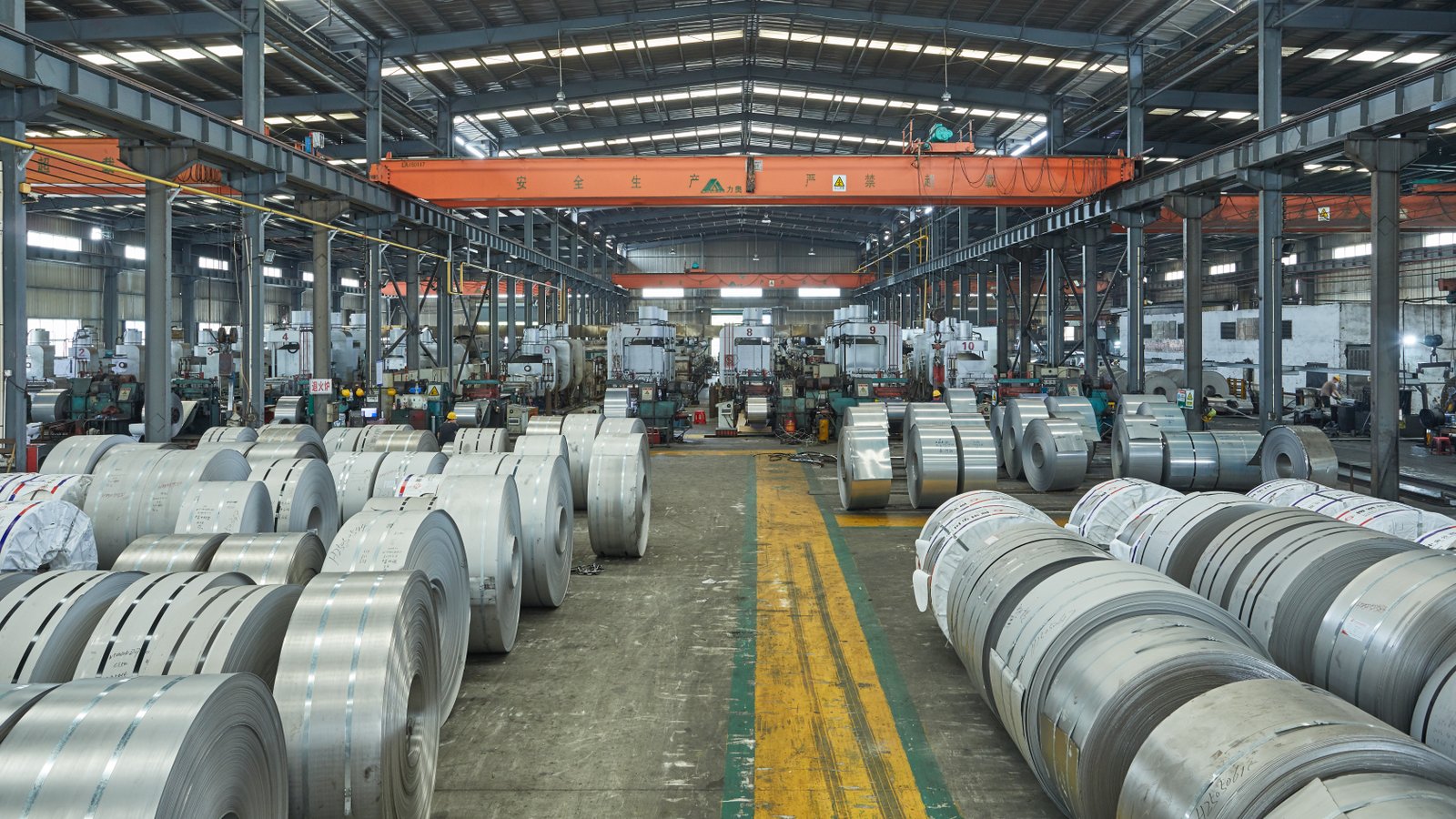
Ensuring consistency in annealing is about creating a system so robust that it produces the same perfect result day after day, regardless of the operator or minor fluctuations in the plant environment. It's a holistic approach that extends far beyond the furnace itself, encompassing material preparation, process control, and ongoing verification. These best practices are not just recommendations; they are the fundamental pillars of a modern, quality-driven manufacturing operation. By embedding these disciplines into your workflow, you can effectively eliminate variability, reduce waste, and build a reputation for unwavering product quality and reliability.
Standardize the Process: From Cleaning to Recipe Management
The foundation of consistency is standardization. This begins before the tube even enters the furnace. You must implement a standardized pre-cleaning procedure. All drawing lubricants, oils, and other surface contaminants must be thoroughly removed using a document and validated method, such as an ultrasonic degreasing bath. This ensures that every tube enters the furnace in the same clean condition, preventing surface reactions and ensuring a uniform, bright finish. Inconsistent cleaning will lead to inconsistent results.
The next step is to lock down the process parameters using recipe management in the PLC9. For each specific product (based on alloy, diameter, and wall thickness), a unique annealing "recipe" must be developed, validated, and programmed into the furnace's PLC. This recipe defines the exact temperature setpoints for each zone, the conveyor speed (soaking time), and the atmospheric composition and flow rate. Once a recipe is proven to produce the desired micro-structure and mechanical properties, it should be locked, and operators should only be able to select the appropriate recipe for the job, not change individual parameters. This practice, which we help all our AKS clients implement, is one of the most effective ways to eliminate shift-to-shift and operator-to-operator variability.
This standardization should also extend to loading procedures. Operators must be trained on the correct way to place tubes on the conveyor—with specified spacing—to prevent thermal shadowing and ensure uniform exposure to heat and atmosphere. Simple visual guides or physical jigs can be used to enforce this. The goal is to make the "right way" the "only way" the process can be run.
Maintain the Machine: Proactive Furnace Maintenance
A process is only as consistent as the equipment used to run it. A furnace is a complex piece of machinery that requires regular, proactive maintenance to perform at its peak. This goes beyond fixing things when they break. A preventive maintenance schedule10 is a critical best practice. This schedule should include regular inspection and replacement of wear items like door seals, thermocouples, and heating elements before they fail. A worn seal can introduce a small, almost undetectable air leak, gradually compromising the furnace atmosphere and product quality over time.
The most important maintenance practice for ensuring consistency is the periodic Temperature Uniformity Survey (TUS). As per standards like CQI-9 or AMS 2750F, a TUS should be performed on a regular basis (e.g., quarterly or annually, depending on the criticality of the parts). This survey acts as a "health check" for your furnace's thermal performance, verifying that it continues to provide a uniform heating environment. If the TUS reveals that the furnace is drifting out of its specified uniformity tolerance, maintenance can be scheduled to diagnose and correct the issue—such as replacing a degraded heating element or repairing insulation—before it impacts production.
Atmospheric integrity must also be maintained. This includes regular leak-checking of the furnace muffle and gas supply lines using a helium leak detector or pressure decay test. The accuracy of all sensors—thermocouples, mass flow controllers, dew point analyzers—should be regularly verified as part of a System Accuracy Test (SAT). A sensor that is reading incorrectly provides false information to the control system, making true process control impossible.
Monitor and Verify: Data-Driven Quality Control
The final best practice is to embrace a data-driven approach to quality control. "Trust, but verify" should be the motto. Modern annealing furnaces, like those from AKS, are equipped with sophisticated data acquisition and logging systems. All critical process parameters—every zone temperature, conveyor speed, gas flow, dew point—should be continuously monitored and recorded for every production run. This creates an invaluable digital record.
This data should be used for more than just archival purposes. It should be actively analyzed. Statistical Process Control (SPC) charts can be used to monitor key parameters over time, allowing you to spot subtle process drifts before they become major problems. For example, if you notice the dew point slowly creeping up over a period of weeks, it could indicate a developing seal failure or contamination in the gas line. This allows you to intervene proactively.
ly, this process data must be linked to material testing results. Regularly take samples from production runs and perform metallurgical analysis (e.g., grain size measurement) and mechanical testing (e.g., hardness, tensile tests). By correlating the physical test results with the process data from the time of manufacture, you build a powerful understanding of the cause-and-effect relationships within your process. This continuous feedback loop—where process data informs quality testing and quality testing validates the process—is the ultimate best practice for ensuring long-term, unshakeable consistency.
Pre-cleaning ensures uniform annealingTrue
Removing contaminants before annealing prevents surface reactions and ensures consistent results.
Operators should freely adjust recipesFalse
Validated recipes should be locked in the PLC to prevent operator-induced variability.
Conclusion
Ultimately, achieving a uniform micro-structure in precision tubes is not about a single piece of equipment, but about total process control. By combining advanced furnace technology with disciplined best practices for maintenance, standardization, and data-driven verification, you can guarantee consistent, high-quality results.
-
Learn how uniform micro-structure affects performance and reliability ↩
-
Explore how annealing enhances material properties ↩
-
Discover essential furnace characteristics for optimal annealing ↩
-
Understand heating challenges in large furnace designs ↩
-
Learn about technologies ensuring uniform heating and cooling ↩
-
Understand how annealing impacts mechanical performance ↩
-
Explore the relationship between microstructure and durability ↩
-
Discover the role of microstructure in specialized tube performance ↩
-
Discover the role of PLC systems in recipe management for precision annealing ↩
-
Find out what preventive measures can ensure furnace reliability and performance ↩


